Dr. S. Sowmya
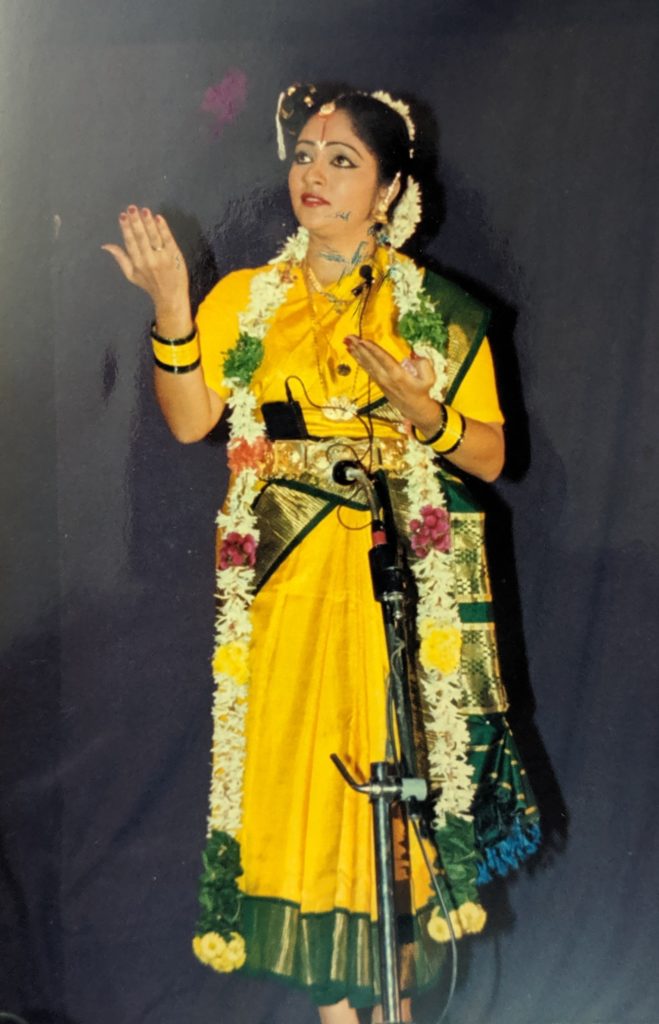
This year’s Sangita Kalanidhi designate, Dr. S. Sowmya, is a musician’s musician – at 50, the second youngest female recipient evokes the epithets ‘scholarly’, ‘erudite’, ‘cerebral’ etc. among fellow artistes, old or young. Given her long list of award winning academic and musical accomplishments, it is no wonder that many leading musicians, who currently fuel the public’s psyche, flock to her for paradigm shifts in perspective, bouncing off ideas and learning new songs.
It is likely that she belongs to the longest line of successive Guru-Sishya Sangita Kalanidhi-s – beginning with Tiger Varadachariar in 1932 to TS Sabesa Iyer in 1934 to Dr. S. Ramanathan in 1985 to Sowmya in 2019, perhaps bearing testament to the excellence of pedagogy of this bani. Adding in her long tutelage with Sangita Kala Acharya, T. Mukta, she has covetable, direct lineage with a high quality, diverse repertoire that is tough to replicate.

Her academic achievements include a Ph.D from the University of Madras (2012), an MSc in Chemistry from IIT Madras in 1992 (winning the IIT Blue award for all-round competency in academics and extra-curriculars), 1st rank and Gold Medalist in MA Music from the University of Madras in 1998 and more. She is a true polyglot – besides taking advanced courses in Sanskrit from University of Madras, she is proficient in Telugu, Tamil, Kannada, Malayalam and Hindi which translates into her singing songs reflecting accurate word-split, meanings and emotion as, perhaps, the vagayekkara-s intended. An indefatigable researcher with an extensive library of her own, she strives to delve deeper into the crevices and crevasses of the field.
Courtesy: Sri. Ramanathan N Iyer via Dr. Jayanth Krishnamurthi.
(Scroll down for Part 2)
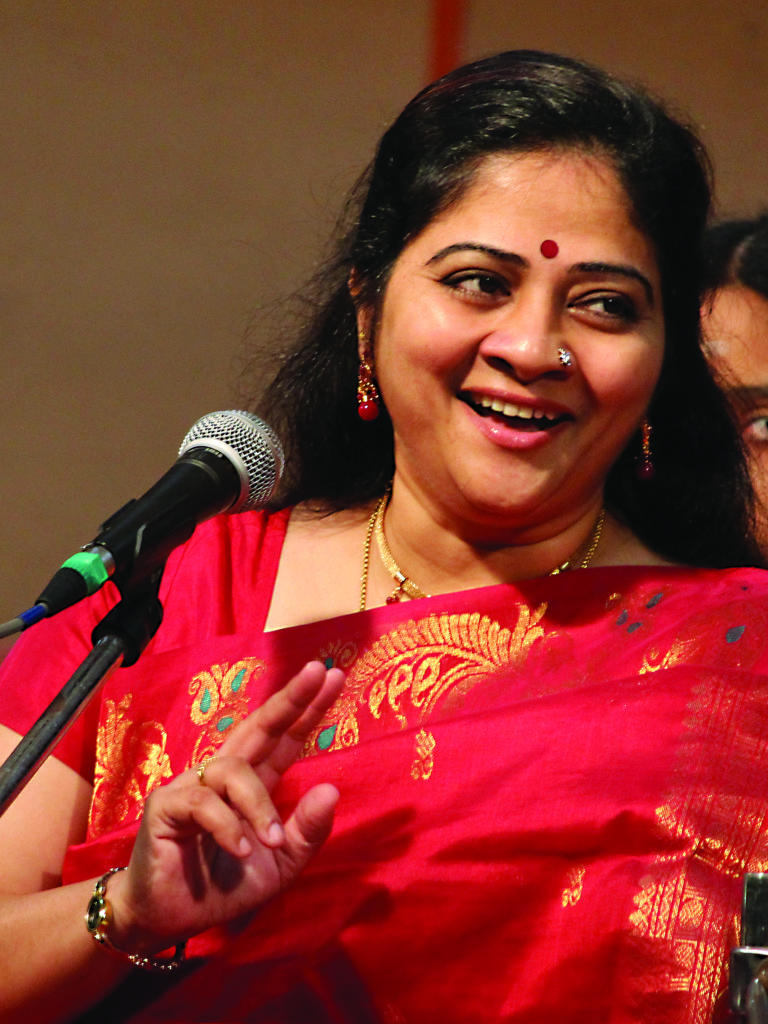
In this day of frills and thrills, Sowmya is markedly different. An analogy she gave, at a recent program on the depth of the Brinda Mukta bani, is apt. Looking at fire, one sees beautiful hues of yellows and oranges – however, should one touch it, the heat is scalding. “My Guru would say that the music should be substantial and it alone should speak – gesticulations, dramatics etc., should be eschewed.” Following that credo, she is sedate sartorially, displays minimal movement in concerts and rarely takes any breaks from song to song. She weaves creative prayoga-s and swara patterns with just fractions of the scale; the seeming simplicity masks the assiduous thought behind, whilst delivering the raga’s concentrated essence beautifully. She pays attention to subtleties, reinforced by her training under Mukta. “It can be the same notes, technically, but a delicate handling can deliver a completely different flavour from one delivered with a punch.” She challenges herself constantly, taking up kalpanaswaram and neraval at uncommon starting points, such as at madhyama kala stanzas.
Many thanks to Dr. Sowmya and Sri. Ramanathan N Iyer for fishing out many photographs specifically for this page. A version of this piece appeared in The Hindu. NOTE: There is a reference below to raga Paadi on this web page. This has been incorrectly mentioned as Pahadi in The Hindu. Dr. Sowmya was referring to Paadi and NOT Pahadi, a totally different raga.
Her father, Dr. M. Srinivasan, started Sowmya off with small songs. He had learned vocal from flautist Dindigul SP Natarajan. Srinivasan was a Chemical Engineer with a PhD from IISc Bangalore, also known for his keen knowledge and appreciation of the nuances of the music. Renowned musicians have learned songs from him. He was the lynchpin who enforced rigorous daily practice on Sowmya.
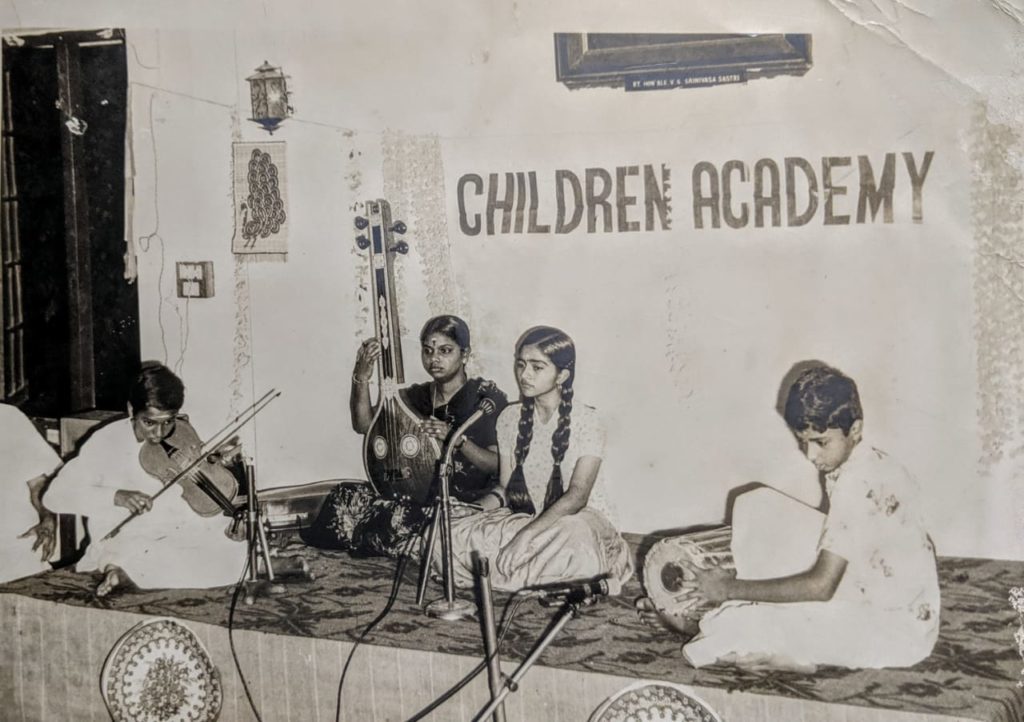
“He would make me sing whatever I had learned each day as soon as I came home – if I made a face about the repeated singing or forgot, it entailed a tongue lashing or a spanking. To avoid this, I would mull over everything on my way back from class.” Family members recollect how he would wake up Sowmya early in the morning for practice even while on short vacations. Srinivasan continues to be a ready reckoner available for Sowmya’s daily consultation.
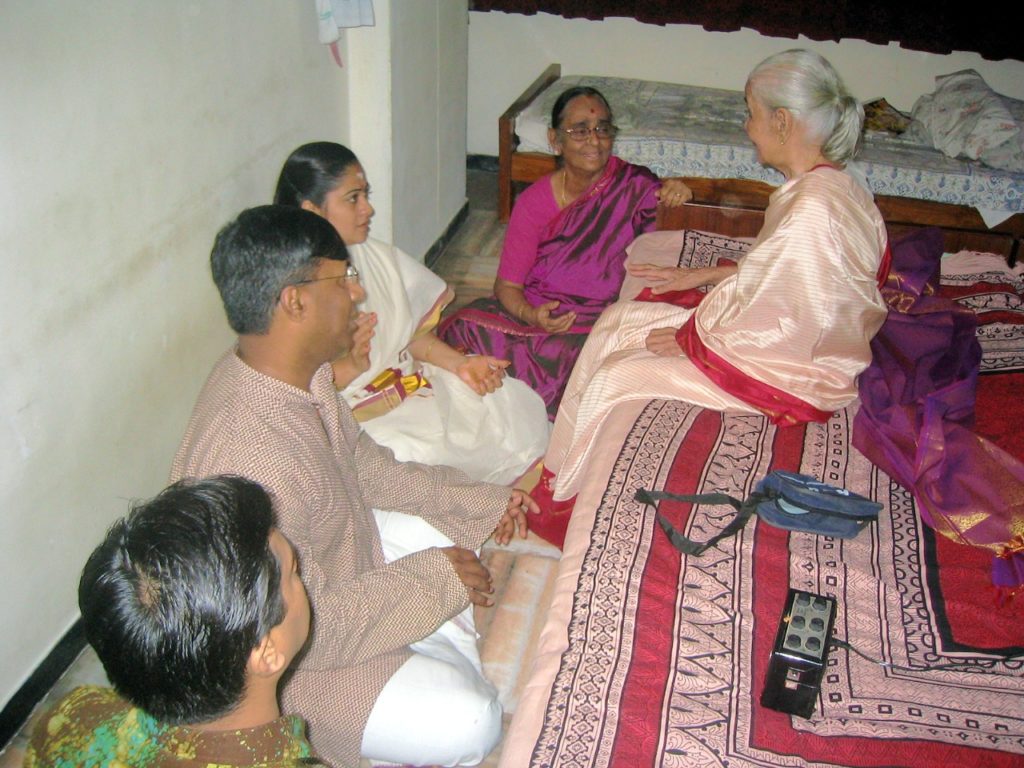
At age 6, she joined Dr. S. Ramanathan’s tutelage, effectively becoming a member of the family. “He was a Jeevan Muktar – a true Guru in every sense of the word,” Sowmya says emotionally. It was a group class. “Even within the group, he would know exactly who made an error and what it was. He was the very embodiment of patience – at the most he might raise an eyebrow, that was about it.” Sowmya explains that he would never repeat an error. Rather he would keep singing the correct version. “With Mukta amma, if past lessons were not repeated correctly or I could not get something quickly, she would send me home. It was always my loss if I did not assimilate instantaneously.” Ramanathan would explain the meanings of songs and technicalities practically like a game. “The way he would say it, we could picturize the song, much like a movie,” she says. Neither teacher allowed for recording or notes during the lesson. The lyrics alone could be written after class. Sowmya recollects trying to notate a padam once. She gave it up as an impossible task soon enough, much to Mukta’s amusement.
After teaching a piece, Ramanathan would often draw their attention to how a particular note was handled in that raga. The students would do round-robin kalpanaswaram. “He would add in restrictions – beginning only from shadjam, for example; using only a few notes at a time; incorporating jantai; taking up a different ragam for each round, the next ragam being a mystery. He would not call it an allied ragam exercise, but it was seamlessly incorporated in the sessions most enjoyably.” These restrictions enforced discipline and brought forth copious new ideas. “We learned to fully explore the scope of just a few notes and not traverse the entire octave for each round.” Similar guidelines were imposed on alapana and neraval. Sowmya’s music reflects internalization of this training.
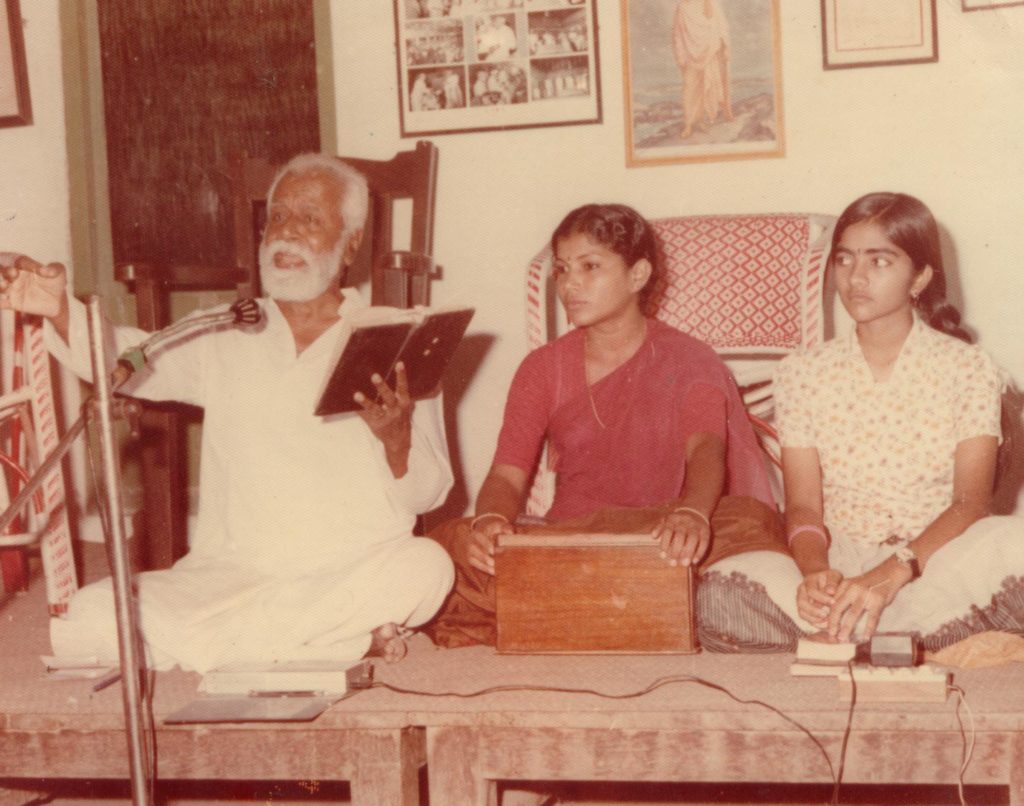
In 1983, she accompanied Ramanathan to a festival at Nerur, where one of the samadhi-s of Sadhashiva Brahmendrar is located. A scheduled artiste had not arrived and the organisers asked her Guru if she could sing instead. She gave her first concert that day, a fully-fledged one. In 1986, she gave her first performance at The Music Academy; she was 17.
Sowmya further enhanced her repertoire by learning compositions from other authentic sources – – Papanasam Sivan kriti-s from Sethalapati Balu, Rukmini Ramani etc. and Mysore Vasudevachar kriti-s from his grandson, S. Rajaram, for example.
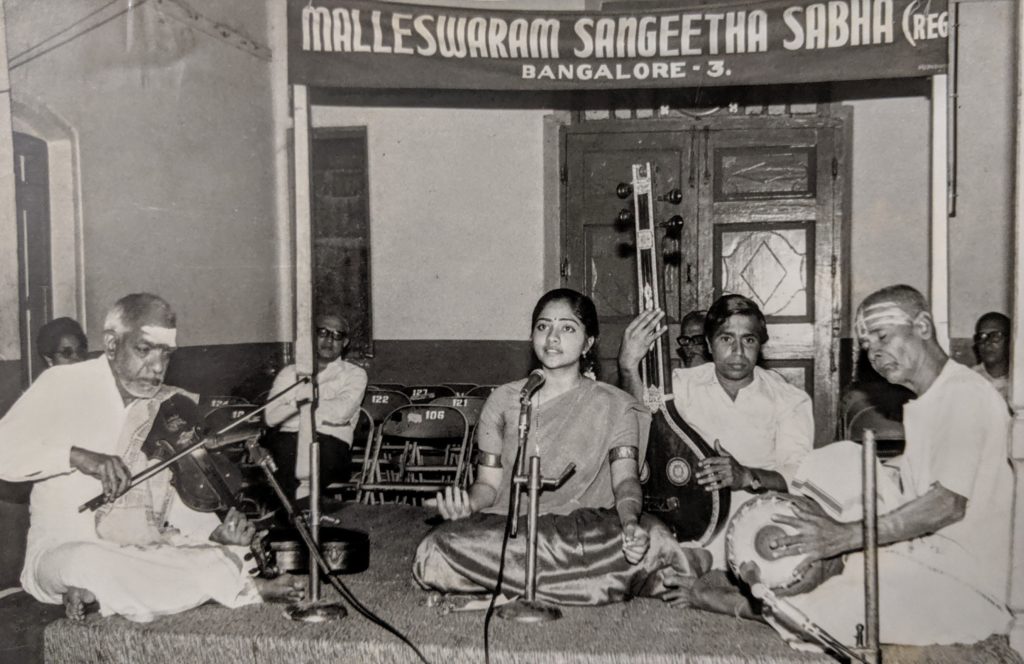
Her concerts were attended by Ramanathan, Mukta and other doyens including Semmangudi Srinivasa Iyer, TM Thiagarajan, B Rajam Iyer, S Kalyanaraman and R Vedavalli. Ramanathan and Mukta, on occasion, would suggest changes to be made. She recollects when she sang a phrase in Nayaki as PMGRS – Ramanathan asked her to sing it as PMRGRS instead. Artistes then were spare with outright praise but clearly indicated that she was doing well. One very memorable occurrence was Titte Krishna Iyengar and B. Rajam Iyer effusively praising the Ragam Thanam Pallavi in Narayanagowlai she presented at the Academy. Krishna Iyengar was renowned for that raga.
Sowmya dislikes the concept of arohanam and avarohanam to define a raga – “In the olden days, specific prayoga-s were taught for each. But by itself, it is very restrictive. How can you encapsulate Nattakurinji, for example, within a specific scale?” When she teaches even a varnam, therefore, she imparts the lyric itself rather than teach the notes. “There are so many ways to sing S N P in Sankarabharanam, for example,” she says. “By singing the words, a beginner will be able to form a picture of the raga and can then explore the myriad interpretations over time.”
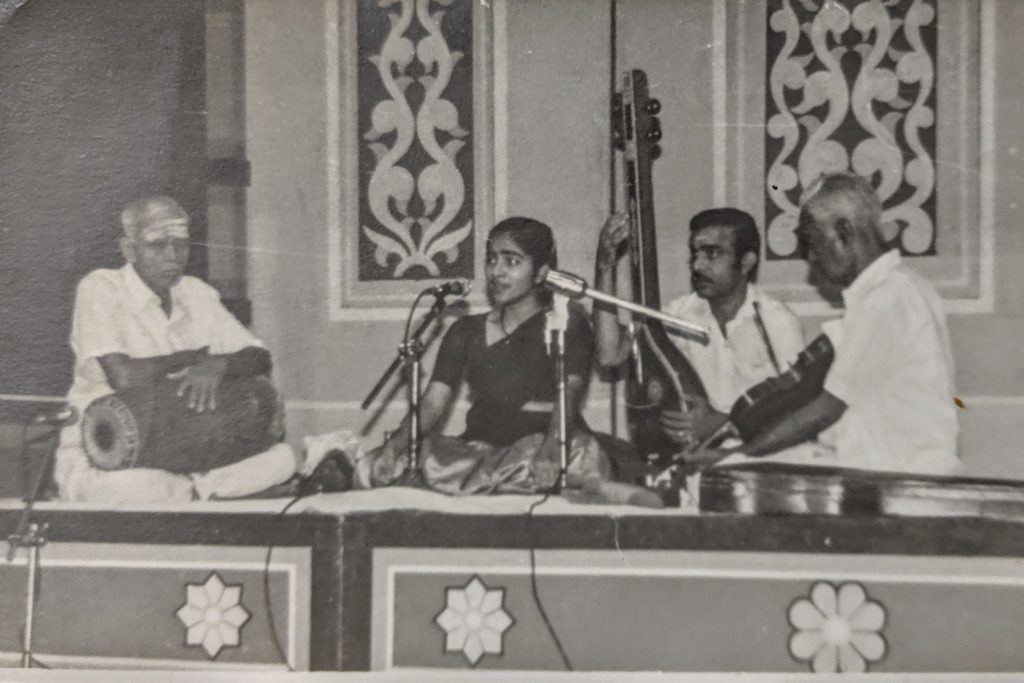
Sowmya got the Government of India’s CCRT scholarship for veena when barely 7. Ramanathan trained her on the instrument too which she is still very much in touch with. Knowledge of the veena, besides giving visual reference to music, pushes her to work harder in vocal. “I often reflect on how to better portray in vocal what the veena does more effectively,” she says. In-depth rumination on the integrity of notes and phrases specific to ragas reflects in her alapana-s. She will not sing some now oft-heard phrases. She impeccably explains how many, for example, often stress the madhyamam in Thodi with a crook making it sound distinctly like Saveri. The incorrect way is often less challenging. She suggests that students take the effort to listen to themselves. “Alfred Tomatis, a French researcher, mentions how people often cannot hear themselves properly, requiring courses on ear training. They are necessary. If one cannot hear one’s mistake, it can never be rectified.”
Her articulation, academic orientation and research affinity are all discernible in her lecture demonstrations. She is concise, precise and unhesitating whilst conveying nuggets of profound information punctuated by amusing yet relevant anecdotes that keep the audience engaged. She does extensive research and studies her topics thoroughly. “If I don’t know enough about something or don’t believe sufficiently in it, I will not talk about it. I am merely taking a leaf from my Guru’s book – he practiced these qualities every day. He never dilly dallied. Neither did he speak unnecessarily.” Her guide, Prof. KK Balasubramanian, at IIT Madras, wherefrom she obtained her MSc in Chemistry, insisted on a methodical approach that she maintains to this day. “He suggested that I first discover what has already been done so that we can contribute something new. He also insisted that I take systematic notes promptly of ideas and concepts.”
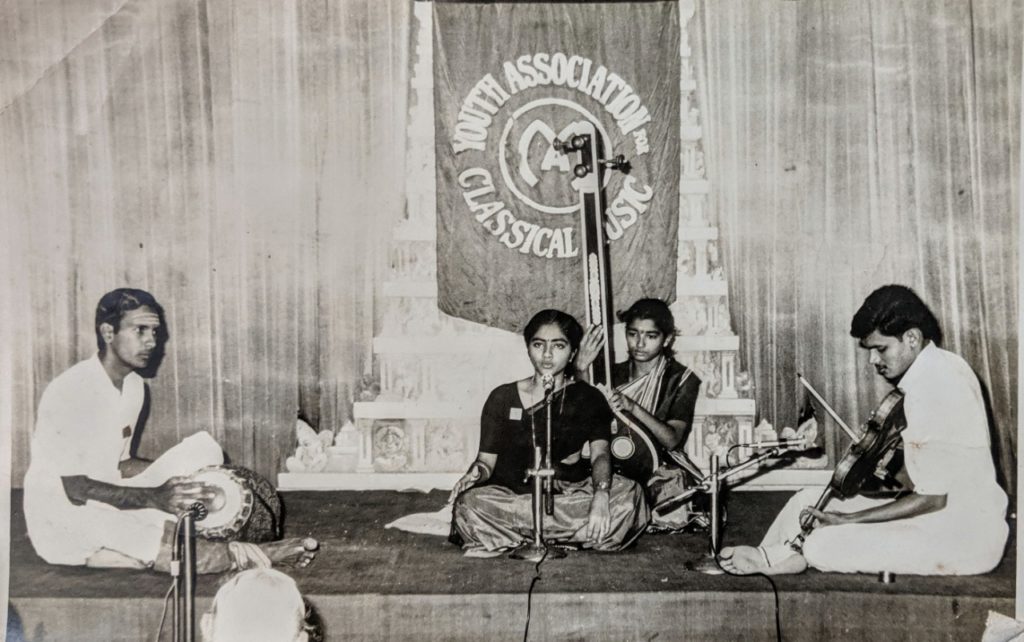
On the faculty of The Music Academy’s Advanced School of Carnatic Music, she is sought after as a teacher otherwise as well. Many performing musicians learn from her. “I consider teaching an important moral responsibility. I mull over how to pass on what I have learned faithfully yet absorbingly.” She asks practitioners to put themselves in the composer’s shoes, learn the meanings of the lyrics and sing songs faithfully. “The alapana can be used to give full vent for what might not fit the spirit of the song.”
She has a penchant for taking raga-s like Paadi, Ganta, Maanji, Ataana (elaborated in the concert included in this page) Narayanagowlai, Nayaki, Yadhukulakambhoji, Darbar, Andholika, Reethigowlai etc. for main pieces. “So many yesteryear stalwarts have sung these raga-s. My Guru expounded several in detail. I even asked him how he did so effortlessly. These raga-s were rendered elaborately then but rarely now. But they are so beautiful and there is much in them that I enjoy bringing out.”
Admittedly, there was hardly any precursor for Ganta in which she presented a Ragam Thanam Pallavi last year at The Music Academy (in 2010, she delivered a 40 minute lecdem on Ganta and allied ragam-s). “I knew Muthuswamy Dikshitar’s Sri Kamalambike, a thiruppugazh taught by Mukta amma and Thyagaraja’s mangalam. I sang those repeatedly and tried to comprehend as much as I could. I also told myself that I should think of Ganta as an independent entity, without overthinking it, getting into it just as I would a Thodi or a Bhairavi or a Sankarabharanam.”
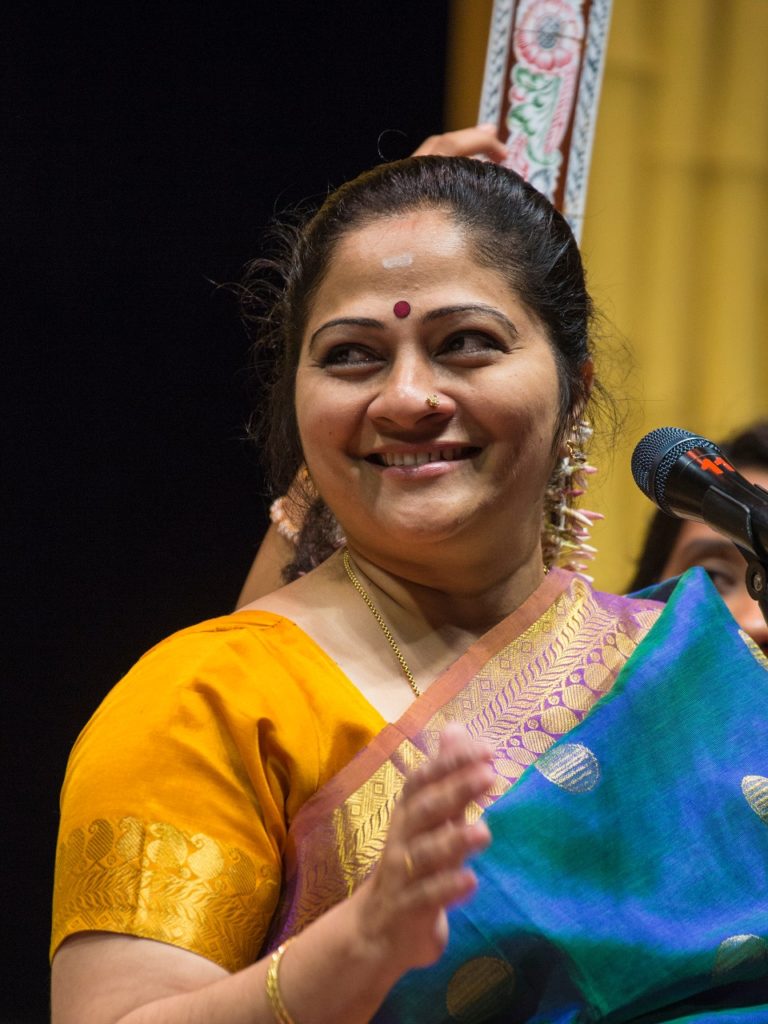
Sowmya has gone through many health problems over the years that have affected her voice and her stamina, but she has never called attention to it. “Each of us has our own battles which we have to fight. One should not mope.” Indeed, she is known for being cheerful, pleasant and friendly.
She shares a palpably vibrant equation with all her accompanists on stage. “That is because there is no might or right. We are all equals. I lay no conditions and there is no question of main artiste and accompanying artistes.” She is also very spontaneous, often taking impromptu suggestions then and there from accompanists on stage, and rasika-s too. “I am used to that. My father would come up suddenly with ideas of what to sing or where to do kalpanaswaram, for example.” She now sings for herself and the space has ceased to matter. “I don’t plan my concerts,” she says. Her pallavi-s are rarely pre-determined. “If Embar Kannan is playing, I will ask him to suggest a ragam. With RK Shriramkumar, I will ask him to come up with a pallavi line. As I sing the alapana, he will decide on the line. As he plays the ragam, I will set it even as the percussionists ask what talam it is going to be in.”
Sowmya has faced a problem encountered by many female artistes, where many violinists and percussionists have refused to play citing her gender. She explained to V. Sriram that some of these artistes subsequently approached her wishing to play, but she politely refused, choosing to stick with her friends who had always been there for her. She feels that the recalcitrance stems more from an attitude problem than gender itself. “A gamut of interesting excuses is given. It also has to do with how many of each gender there are – there was a time when most performers were male – it was easy to exclude women. Later there were more women – it became necessary to play for females then. Now it is majority male again.”
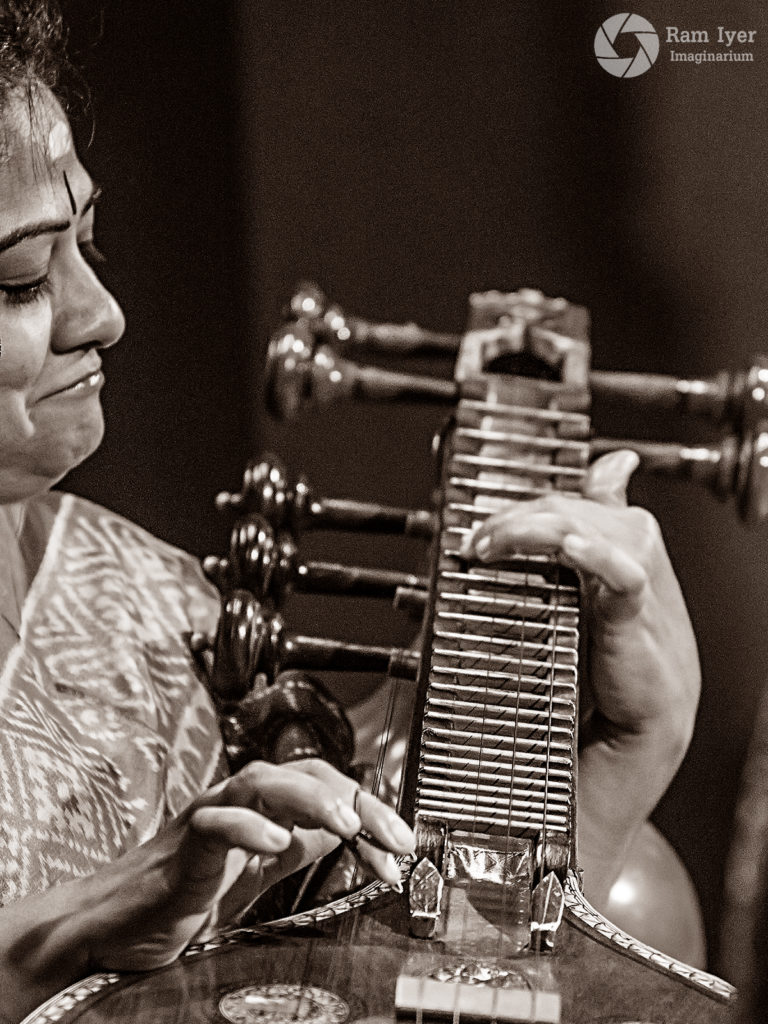
Sowmya would observe mridangists really struggle with keeping the instrument in tune citing the lighting on the stage, or the air conditioning, or the humidity. “I would wonder. They would casually remark – you are into science, right? Why don’t you do something about it?” Sure enough, her PhD dissertation was on “A study of the effect of temperature variations on the pitch of a double-headed drum (mridangam).” She acknowledges the support of Dr. Premeela Gurumurthy, at University of Madras, who encouraged her to pursue this unusual, self-selected topic that commingled music, physics, chemistry and material sciences. “I was itching to get back to organic chemistry and basic sciences. I really enjoy the manodharmam of the molecules.”
On the Sangita Kalanidhi award itself, she says, “Those who have got it have been trendsetters, people to learn from, people from whom I have learned. The fact that I am in that august company – I see it as a responsibility – it does not seem like recognition for what I have achieved but more like I should continue to work for the art.”
She would like to see youngsters to get into the depth of music while avoiding politics completely. “It should be art for art’s sake. Keep doing what is correct – just be true and sincere. If you have that spark, you will arrive and you will last. Attention should be paid to how to evolve in music. At some point, you should think of what you are giving back to music. Do think long term. What learning points are you providing in your concert? Let musicians first contribute to music. Musicians should be socially responsible too. It is not only corporate social responsibility. Think of the underprivileged. Live and help live. It is heartening to see that many more of this generation are doing this – much more than in mine.” Her Sukrtam foundation was set up for this very purpose.
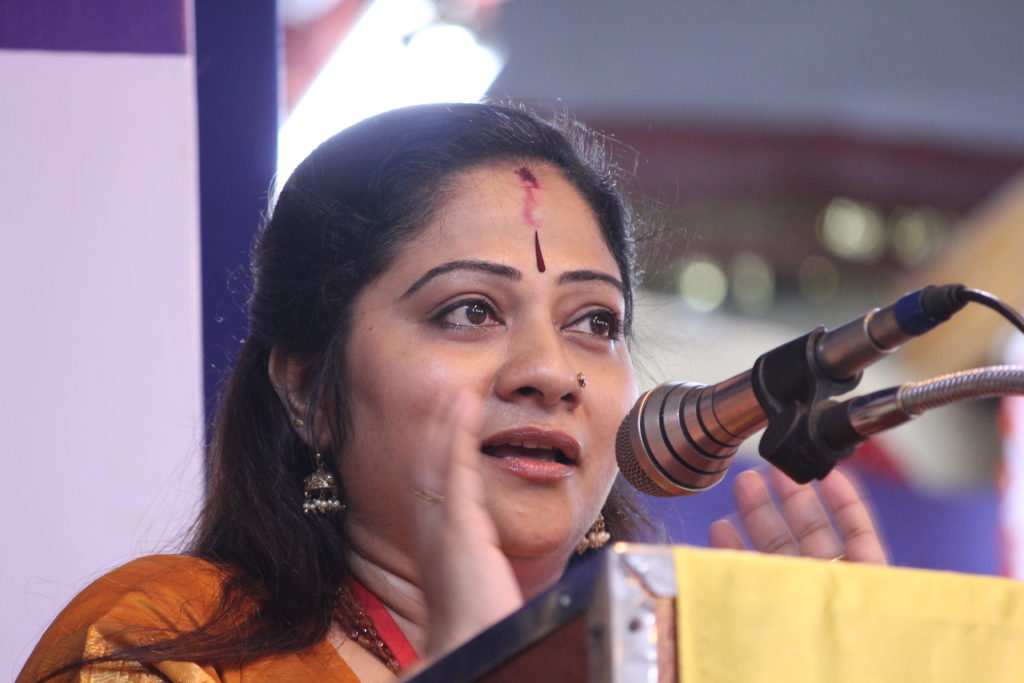
She has incepted getting younger artistes to present in The Music Academy’s academic sessions. “For youngsters to want to participate, we should give them ownership – it will motivate them and others, whilst being educative. So many are committed and sincere to the art form.” Sowmya says that artistes should not avoid such opportunities fearing public criticism – “It is never about the person. Only about the fact. Learn from the mistake and proceed.”
She is bringing back the then famous Raga Lakshana sessions. “Raga-s have evolved over time. It is interesting to see its development. The audiences too have changed. These sessions used to be packed when it was conducted earlier.” She is also reviving theatre in the season. Enacted entirely by the students of The Music Academy’s Advanced School of Carnatic Music, these thematic presentations see students pushing their limits, engaging in costume design, choreography, acting etc. whilst learning important chapters of our cultural fabric.
Courtesy: Sri. Ramanathan N Iyer via Dr. Jayanth Krishnamurthi.
(Scroll up for Part 1)
In her desire to support art in all forms, she now wears sarees showcasing traditional weaves at her concerts. She prefers cottons and silk cottons in general. “It is my way of showing my support to these skilled artisans. All art should be encouraged.”
She has shattered the notion that one can be good only in one thing – be it academics, vocal, veena, lecture demonstrations, handwriting, painting, cooking or kolu, she does each exceptionally. For Dr. S. Sowmya who has received recognitions galore, musical or otherwise, the Sangita Kalanidhi is but one more feather in an already many-splendoured cap.
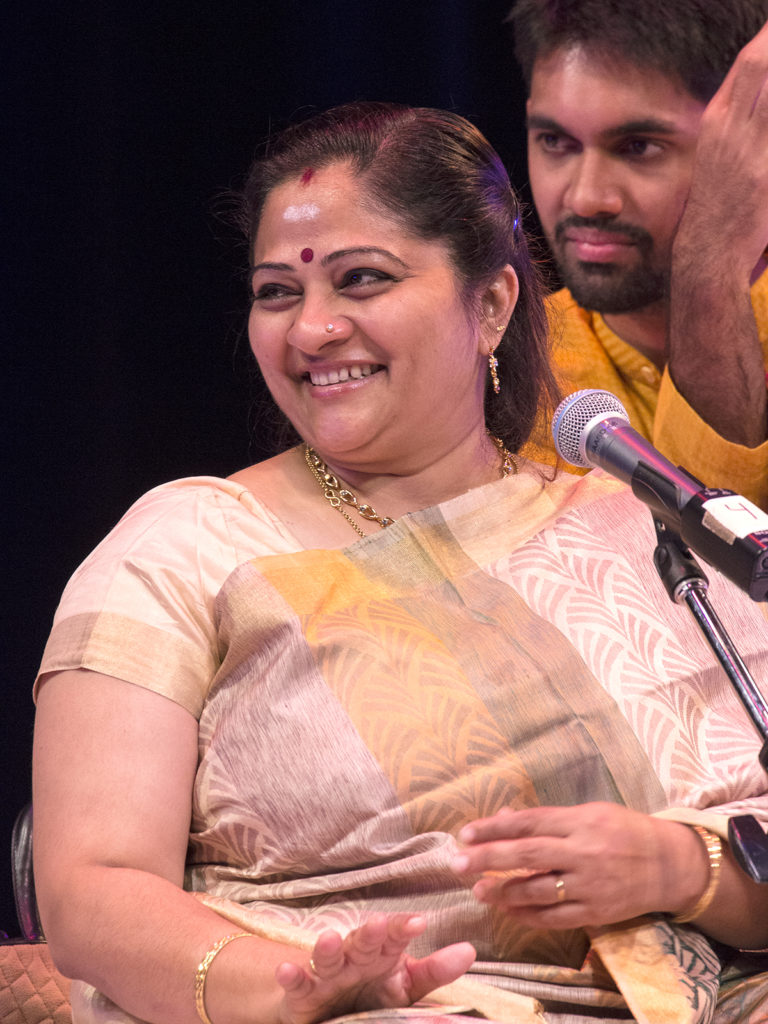
Thanks for the post.. Excellent informations and lec-dem kutcheris..
Namaskaram..
Thanks for the post.. Excellent informations and lec-dem kutcheris..
Namaskaram.. Not heard kutcheris and talks.. Must be good I know
Thorough and informative article. Thanks for a good read.
I love this piece on Sowmya. You have captured her multifaceted personality and painted the canvas of her accomplishments with your mastery of words in such painstaking detail. Remarkable! Thank you for this.
A rare piece of laudation with rare photographs and audios . The write up and the writer truly match the brilliance of the artist who is being talked about! Both being my favourite☺️ My special wishes to U, VidyaLakshmi👍👌
Very nice article, Vidya, on one of my favourite musicians. And thank you for the audio pieces too.
Oh my missed reading it in The Hindu . Oh my goodness , there is so much to this person . I never knew that there is much accomplishments from this one person. She defines who an all rounder is & become .
So inspired . I grow much more in respect for the persona Sowmya .
In most of articles that we read, we are that much more richer in becoming aware of the subject of the article. However , in your writings what stands out, apart from your inimitable style, is your ability to make the reader very curious about the author too . Your knowledge on the subject , is clearly brought out too . It takes 2 to tango ! Kudos and keep the good work going